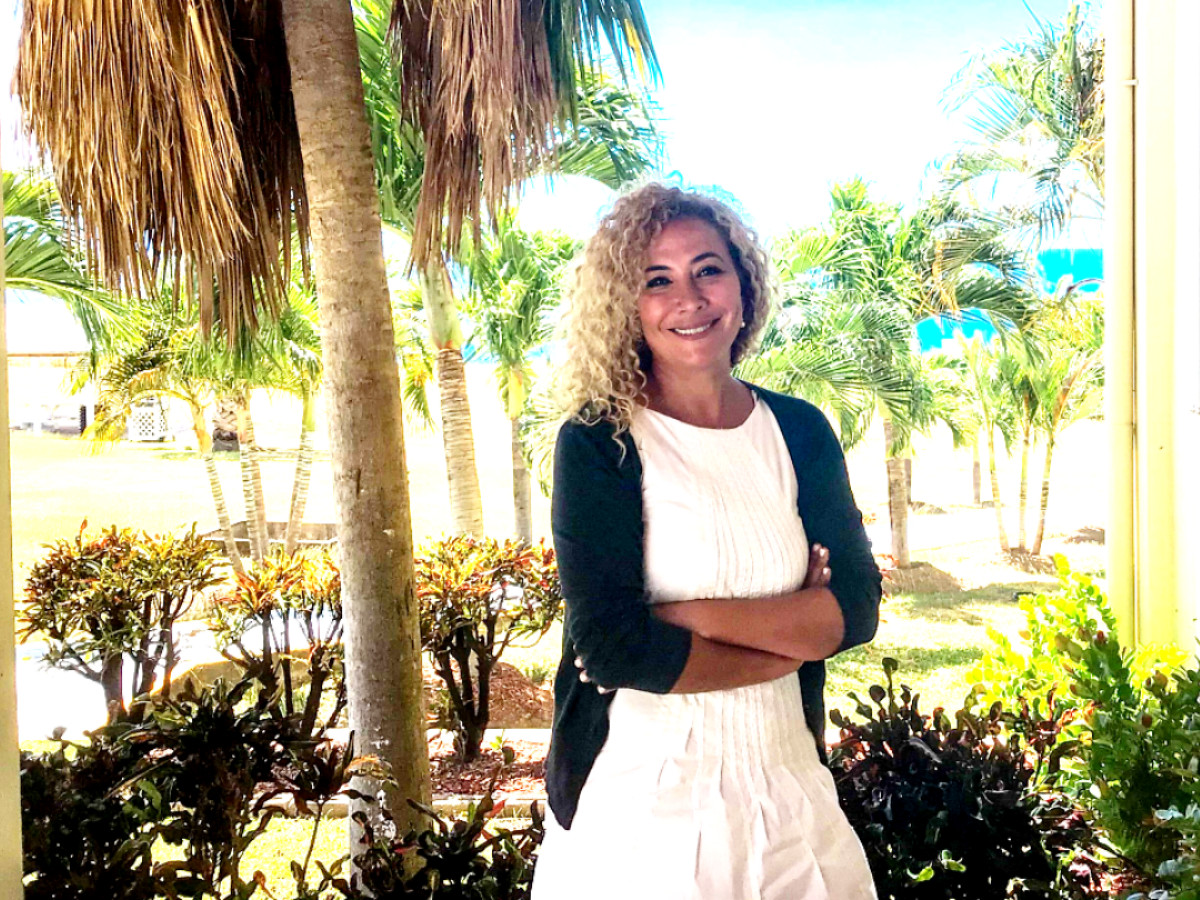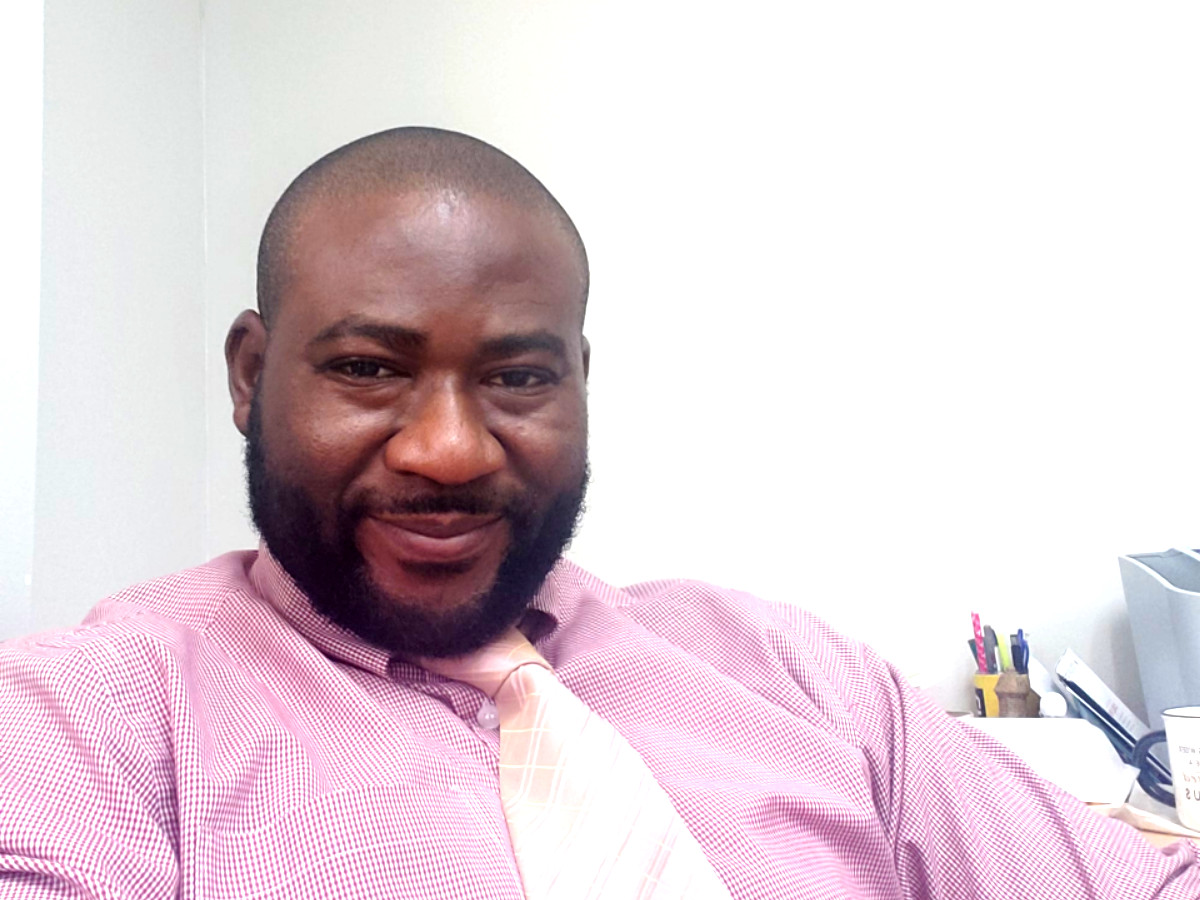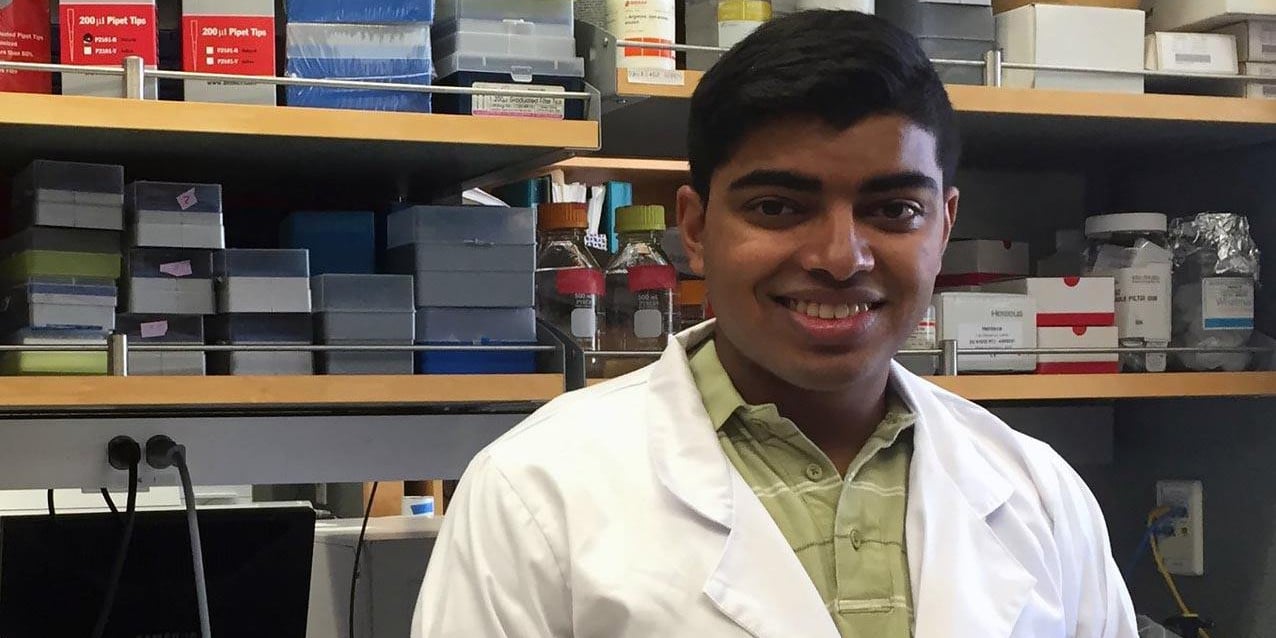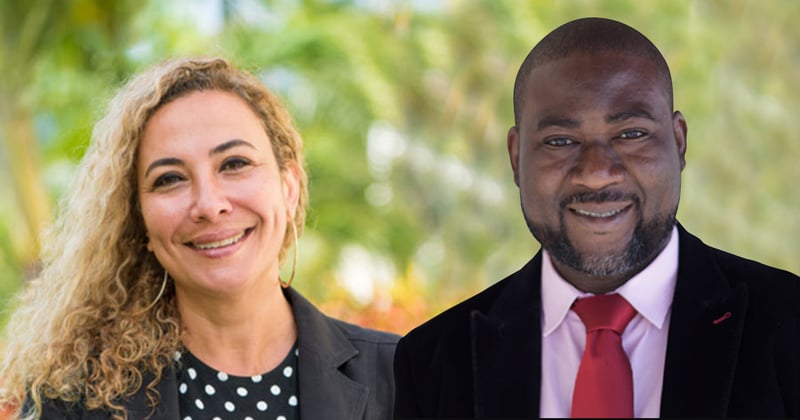UMHS professors Dr. Adegbenro O.J. Fakoya and Dr. Rania Siam both had important research published recently. Dr. Fakoya published a book chapter on “Induced pluripotent stem cells in intestinal diseases” in The Intestine, released by Academic press, with the help of UMHS student Nihal Satyadev. Dr. Fakoya also published “The diagnostic challenges associated with myocardial infarction type 2” in the International Journal of Applied and Basic Medical Research. Dr. Rania Siam was co-author of the study “The association of group IIB intron with integrons in hypersaline environments,” published in Mobile DNA. Dr. Siam was also one of many co-authors of “A global metagenomic map of urban microbiomes and antimicrobial resistance” in Cell magazine, Science Direct.
The UMHS Endeavour spoke to Dr. Fakoya and Dr. Siam about their work. This post will examine highlights of the research published by these two esteemed UMHS faculty members and a UMHS student in the spring and summer of 2021.
 UMHS professor Dr. Rania Siam. Photo: Courtesy of Dr. Siam.
UMHS professor Dr. Rania Siam. Photo: Courtesy of Dr. Siam.
Dr. Rania Siam publishes studies in Mobile DNA & Science Direct
Rania Siam, M.B.B.Ch., Ph.D., UMHS Course Director and Professor of Microbiology, spoke to us about her study “The association of group IIB intron with integrons in hypersaline environments,” published in Mobile DNA.
The study is co-authored by Dr. Siam and Dr. Sarah Sonbol of the Biology Department and the Graduate Program of Biotechnology, School of Sciences and Engineering at the American University in Cairo, Egypt.
Dr. Siam explained the study’s significance.
“The study improves our understanding of the resilience strategies of organisms in extreme and harsh environments,” Dr. Siam said. “This provides insight on life in extreme habitats.”
 The Dead Sea in Jordan is a hypersaline environment. UMHS professor Dr. Rania Siam was co-author of a study on the association of group IIB intronintegrons in hypersaline environments, published in Mobile DNA. Photo: Adobe.
The Dead Sea in Jordan is a hypersaline environment. UMHS professor Dr. Rania Siam was co-author of a study on the association of group IIB intronintegrons in hypersaline environments, published in Mobile DNA. Photo: Adobe.
She said the study investigated specific integrons (a known mobile genetic element that promotes genetic diversity) in organisms from hypersaline and alkaline environments.
“Using bioinformatics, we have shown that these integrons play an important role in increasing the persistence of the cells to adapt to their salty and alkaline environments,” she said.
Dr. Siam contributed to a worldwide study on microbes in transit systems. The work was also discussed in a new publication “A global metagenomic map of urban microbiomes and antimicrobial resistance” in Cell magazine, Science Direct. The study is a catalog of urban microbes including viruses, bacteria and antimicrobial resistance genes.
She said the study was part of a consortium headed by Professor Mason from Weill Cornell Medicine. Several publications discussed the work, including an article in the New York Times
“Subway Swabbers Find a Microbe Jungle and Thousands of New Species.”
 UMHS professor Dr. Adegbenro O. J. Fakoya. Photo: Courtesy of Dr. Fakoya.
UMHS professor Dr. Adegbenro O. J. Fakoya. Photo: Courtesy of Dr. Fakoya.
Dr. Adegbenro Fakoya discusses two published works
Adegbenro O. J. Fakoya, MBBS, MSC, MBA, PGDIP, Associate Professor of Gross and Developmental Anatomy and Histology at UMHS, along with UMHS student Nihal Satyadev, was one of the authors of a book chapter published in The Intestine, "Induced pluripotent stem cells in intestinal diseases."
Dr. Fakoya spoke about the research involved with the chapter.
“Induced Pluripotent Stem Cells (iPSCs) have infinite proliferation in culture and pluripotent capabilities as they can differentiate into the three embryonic germ cell layers (ectoderm, mesoderm, and endoderm) and can generate all cells of an adult organism,” he said.
Dr. Fakoya explained that in 2006, Dr. Shinya Yamanaka and his team of scientists “pioneered the description of induction of pluripotency in mouse somatic skins cells by enforced expression of four genes, namely, Oct 3/4, Sox2, Klf4, and c-Myc (OSKM/Yamanaka factors.”
“iPSCs as an alternative source of pluripotent stem cells with the same degree of differentiation potential as Embryonic Stem Cells (ESCs) bypass these ethical drawbacks, thus removing any hindrance to advancement in pluripotent stem cell research and their application clinically. Indeed, iPSCs hold great promise in the generation of patient-specific pluripotent stem cells for human disease modeling, drug development, and individualized cell-based therapy for various diseases.
“One of the crucial applications of iPSCs is their ability to differentiate into organoids, a collection of cells that closely resembles tissue. iPSCs and organoids are currently being studied to treat intestinal diseases such as colorectal cancer (CRC), Hirschsprung disease, Inflammatory bowel disease, etc.
“The first effort to use human iPSCs for CRC therapeutic purposes was to administer them as a vaccine. Given that both stem cells and cancer cells express oncofetal antigens, the group hypothesized that the administration of stem cells might generate a protective immune response.”
Dr. Fakoya said additional information on iPSCs in intestinal diseases can be found by visiting Science Direct.
 UMHS student Nihal Satyadev worked with Dr. Fakoya on a chapter for The Intestine. Photo: Courtesy of National Academies of Sciences, Engineering, and Medicine.
UMHS student Nihal Satyadev worked with Dr. Fakoya on a chapter for The Intestine. Photo: Courtesy of National Academies of Sciences, Engineering, and Medicine.
He commended the contribution of the UMHS student.
“Nihal Satyadev, an outstanding UMHS student, contributed immensely to this chapter,” Dr. Fakoya said. “He contributed to the library search for relevant publications, wrote and assisted with editing the chapter. "
In July, Dr. Fakoya was among several co-authors published in the International Journal of Applied and Basic Medical Research for "The diagnostic challenges associated with type 2 myocardial infarction.”
Myocardial infarction is the medical term for what is known commonly as a “heart attack.” Dr. Fakoya explained the different types of this cardiac event.
“There are five types of myocardial infarction (MI), the death of parts of the heart tissue; the types were introduced in 2007,” Dr. Fakoya said. “Type 2 myocardial infarction (T2MI) has been established to result from an imbalance between oxygen demand and consumption by the heart, especially in the absence of the rupture of a plaque (a fat buildup in the blood vessels that supply the heart itself) or recent revascularization.”
What are examples of conditions that can increase myocardial oxygen demand? He said severe anemia, hypertension, aortic valvular disease, etc., noting “conditions that decrease myocardial oxygen supply include tachyarrhythmias, hypoxic respiratory failure, and both conditions can lead to myocardial cell injury and death.”
How does a type 2 myocardial infarction differ from others?
“Type 1 myocardial infarction (T1M1) is usually secondary to plaque buildup in the blood vessels supplying the heart (atherothrombotic plaque obstruction) with a possible rupture,” Dr. Fakoya said. “Managing T2MI has still proven to be a challenge considering difficulty providing an early diagnosis and poor prognosis. In countries with little economic resources, cardiac biomarkers and imaging techniques and many other diagnostic tools cannot be accessible except in a few centers. Even the choice of essential ECG recordings can be lacking. In summary, adequately addressing the challenges of diagnosing a MI would provide better patient care and excellent quality of life. It would also drop misdiagnosis and mortality rates.”
(Top photo): UMHS professors Dr. Rania Siam & Dr. Adegbenro O.J. Fakoya. Photo: UMHS files.

Scott is Director of Digital Content & Alumni Communications Liaison at UMHS and editor of the UMHS Endeavour blog. When he's not writing about UMHS students, faculty, events, public health, alumni and UMHS research, he writes and edits Broadway theater reviews for a website he publishes in New York City, StageZine.com.
















